According to the International Dairy Foods Association, the average American eats more than twenty-three pounds of ice cream every year. I don’t know about you, but that is just about the best statistic I’ve ever heard.
And for as wonderfully enjoyable as that may be, we’re still faced with a lot of decisions when it comes time to do the actual business of eating ice cream. The beauty of it all is that truly, there’s no wrong way to eat ice cream. That being said, I do have a few tips. What qualifies me, you ask? Well, aside from being a fanatical lifetime achievement award hopeful in the category of ice cream eating, I also once owned and operated a small ice cream factory, and subsequently wrote a book about it. I still spend much of my time obsessing over and analyzing the science of said frozen dessert. So while these are by no means hard and fast rules, these are a few notes that in my humble opinion optimize the ice cream eating experience. We all know good ice cream doesn’t come cheap, either, so make every creamy bite count—all twenty-three pounds of it per year.

Temperature
This is the first thing I consider when I decide it’s time for an ice cream. Everyone seems to think of ice cream in the context of a single temperature setting: cold. Obviously, keeping ice cream in a frozen state is critical to its integrity. But when I talk about temperature, I’m referring to both internal (that of the ice cream), and external (that of the environment in which it’s being eaten).
Concerning the latter, I often hear that ice cream is a “summer” treat, and I strongly beg to differ. In fact, summer is my least favorite time to eat ice cream. For one thing, it’s often too hot to actually enjoy the thing without it decompensating in your hands (or all over your car, your cute new sundress, the sidewalk, et cetera). If I am going to eat a frozen treat on a hot day and risk the aggravation and anxiety of attempting to consume before it sublimates, I prefer sorbets, ices or granita—things that are inherently lighter in composition. When it comes to ice cream, I’m more inclined to the super premium stuff when the weather is cooler. Personally, a big scoop of something rich, dense and creamy feels more appropriate when there’s a chill in the air.
Internally, there are varying recommended temperatures for different types of frozen dessert. Premium American brands—the really good stuff that is usually labeled “craft” or “artisanal”—should be served at about zero to six degrees Fahrenheit.
Gelato is meant to be dished out at a warmer temp—between ten and fifteen degrees—while soft serve falls in a warmer category still—around eighteen to twenty-two degrees. Some argue gelato is more flavorful than ice cream, but that can to some degree be attributed to temperature. It is a sad truth that eating ice cream has almost no aroma thanks to the fact that freezing temps keep those compounds from being expressed. A few extra degrees open up a whole new dimension.
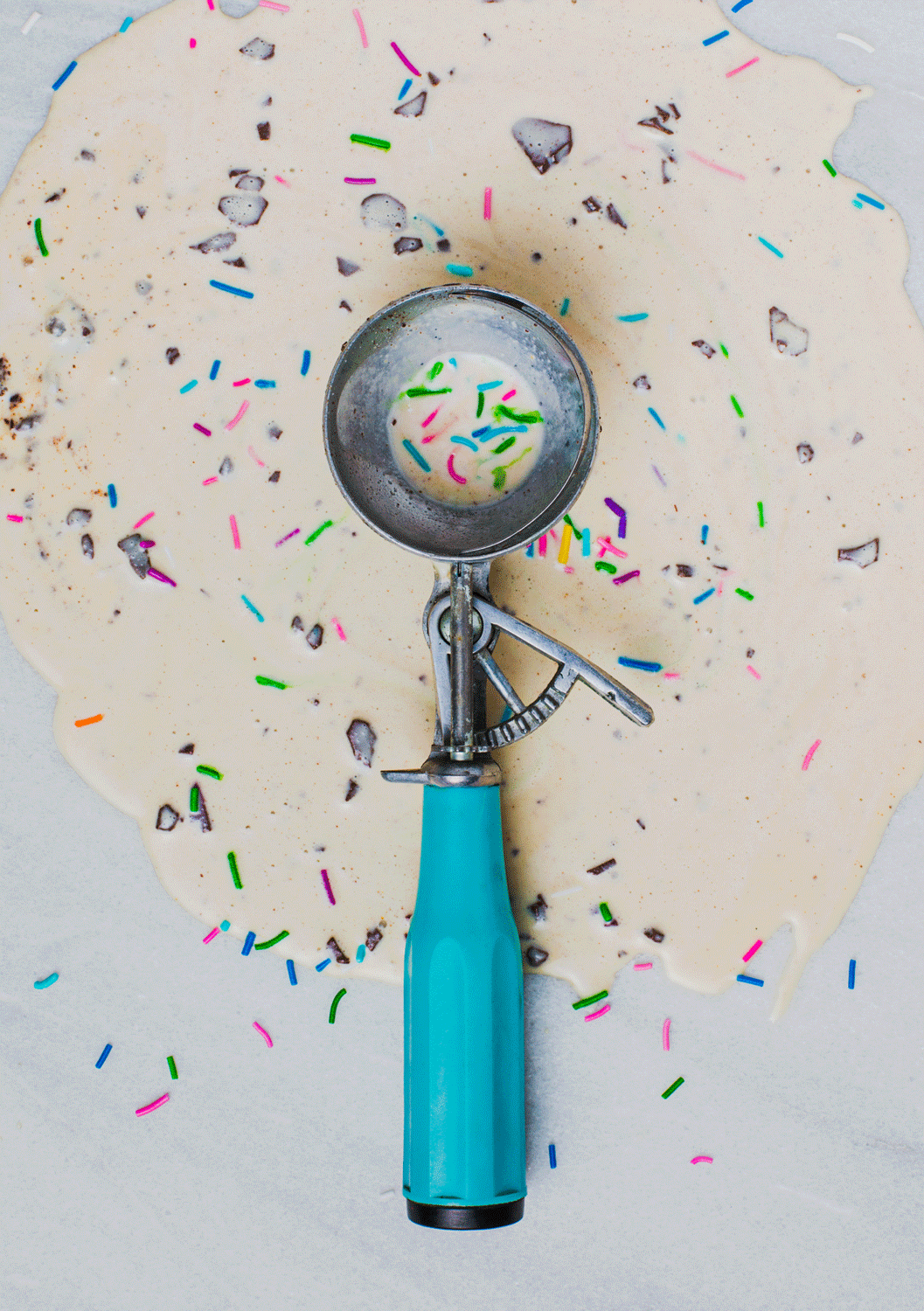
Flavor Pairings
It can be dizzying to look at the menu of an ice cream shop sometimes, and one of the most obvious steps toward a perfect ice cream experience is in picking the right flavors. Show up unprepared and it’s easy to become overwhelmed and make a critical error in ordering, because here’s the thing: mint chocolate chip is easily one of my favorite flavors in the world, but it clashes devastatingly with my deep preference for all things peanut butter. Coffee ice cream can be pretty wonderful, but does it really jive with lemon? Caramel is delicious, but maybe not with cotton candy (in my humble opinion).
So while you might like all the flavors individually, it’s important to consider the sum of their parts. Sadly, you can’t compartmentalize ice cream, because as it melts down, it inevitably mingles with whatever else is on your cone—and especially in your cup (where it can become a soupy, incongruous mess if you’re not careful).
It’s never easy to make the tough decisions and narrow down a plethora of delicious options, but it can be helpful to use one choice to guide another. I try to go in with an idea of what I’m in the mood for—a must have—and see from there what else is on offer to enhance rather than compete.
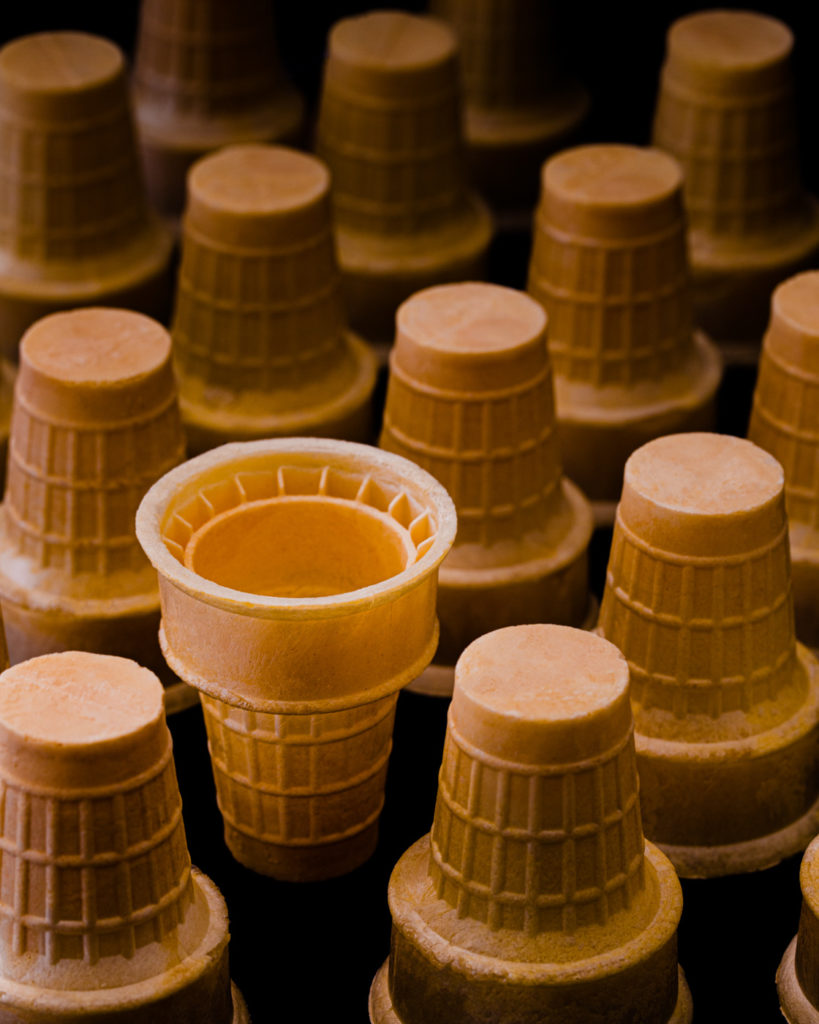
Vessel
Once you’ve chosen your flavors, the next decision is to decide how you want to eat them. The traditional question is cup or cone. The factors that inform this decision for me are myriad, but include setting, ambient temperature, category of creamy delight (Gelato? Soft serve? Hard scoop?). If the flavor is going to be more delicate, I almost always choose a cup for two reasons: first, it won’t have to compete with the flavor of a cone, and second, because I can give it a chance to warm up a little without the risk of it running all over the place.
But there are increasingly great reasons to go with a cone, including companies like The Konery which has made an art form of riffing on the old standby, and even environmental implications (the #coneonly trend championed in hopes of minimizing ice cream-related refuse). But going for the cone can quickly turn into a choose-your-own-adventure situation, so let’s take a closer look at the most available options in the category.
Wafer/Cake Cone
This cone gets a bad rap as a commodity option. Spots like McDonald’s,Dairy Queen, Tastee Freez and other fast food or roadside stands usually serve this as a default option if you don’t specify further. They’re definitely the least expensive for an ice cream shop to stock, as well as the fastest to go stale—and to fall apart when saturated with a melting flavor.
Still, I feel compelled to offer a counter argument. There are merits to the cake cone. For one thing, they’re relatively neutral in flavor—and believe it or not, these are the lowest in sugar content by a long shot (five percent versus more than thirty or more with the following varieties). That makes them ideal for soft serve, which tends to be very mild. And while there seems to be a consensus that they have a “styrofoam” quality, I happen to enjoy the wafery quality—and given their pervasiveness and staying power, I’ve got to imagine I’m not the only one. Plus, the flat-bottomed version is super convenient when you want to take a brief break.
Sugar Cone
The sugar cone is the hardest and crunchiest of the bunch, which can be really satisfying and offer a nice textural contrast. But for me, it makes it the least desirable for soft serve as the brittle cone can compete and overtake the pillowy contents. The sugar cone also has a more assertive flavor—perhaps even more than the waffle cone, thanks to a good dose of brown sugar.
Trying to jam a dense super premium scoop on a wafer cone will likely compromise its integrity, but on a hot day when you expect a fast melting scoop, I advocate for the sugar cone because of its durability. It will remain structurally sound the longest when faced with a fast-liquifying flavor.
Waffle Cone
Inarguably, one of the major selling points for a fresh waffle cone is the ridiculously enticing, buttery and baked aroma. When you walk past a shop doing honest-to-god homemade waffle cones, I seriously dare you not to drift inside like a cartoon mouse being drawn in by a wheel of cheese.
But not all waffles are created equal, and not all are made in-house. That’s not necessarily a bad thing, as commercially manufactured waffle cones usually have a durability closer to the sugar cone, while a homemade version will mostly likely be softer and more delicate. That said, the fresh ones are almost always infinitely more delicious. Waffles tend to be the largest of the three as well, making them ideal to accommodate multiple scoops, and in the care of an ambitious shopkeeper, even some toppings.
Cones are also a great opportunity to do some ice cream bedazzling. Pimp your cone by dipping the rim in chocolate or sprinkles, line it with Nutella or peanut butter or caramel, drop a malt ball in the bottom which pulls double duty as a sort of cork, and also a fun final bite surprise.
Beyond the basics, brilliant minds out there have gone bananas with what you can eat ice cream out of; what started with the simple waffle bowl trend has evolved to include cookie dough cups, hollowed out doughnuts and more. Hell, Dominique Ansel is even serving soft serve out of a watermelon slice these days, so really, the sky’s the limit.
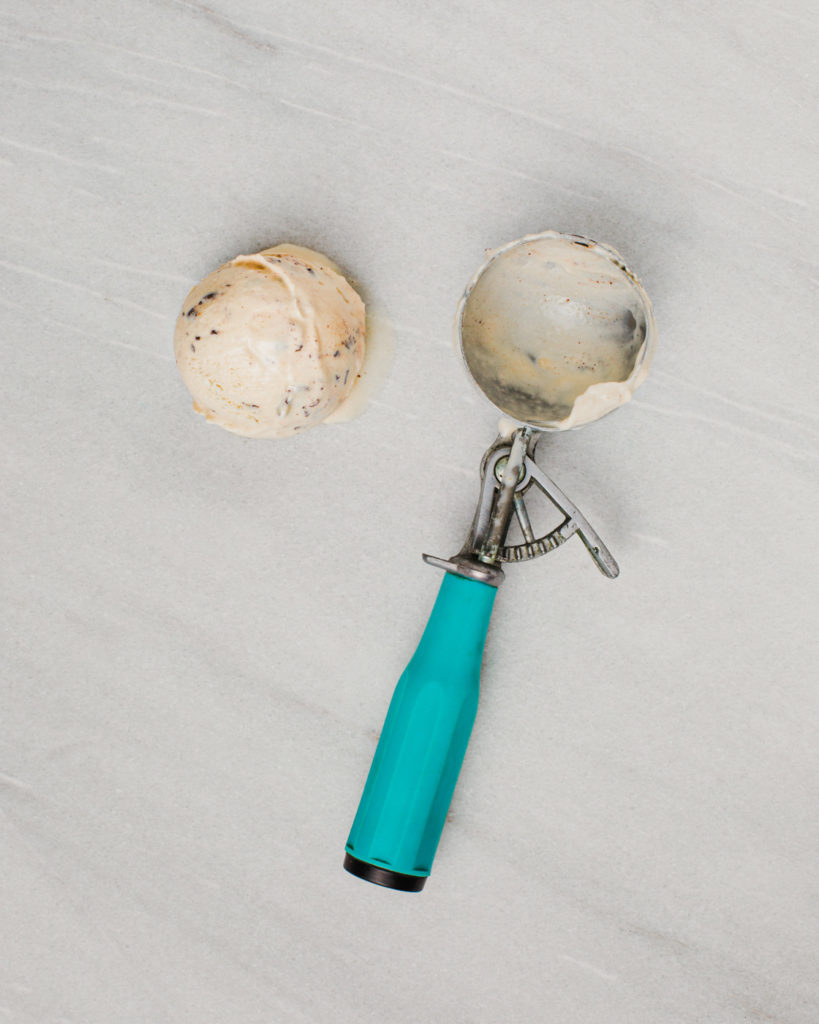
Order
I find it nearly impossible to settle on a single flavor when faced with dozens at a scoop shop, or even hundreds at the grocery store, so it’s rare for me to select just one. The majority of sales at my ice cream shop were also split scoops with two or more flavors, so it would seem I’m not the only one suffering from the Paradox of Choice. That made it especially important for me to make sure each customer was asked the question: which flavor would you like on top?
It’s not just about what is most convenient for the scooper or the order in which they’d been loaded into the dipping cabinet. There’s an actual science behind the stacking order of ice cream. Allow me to elaborate…
The top flavor is likely to be eaten first. It will be colder and harder fresh from the freezer, which means it should be a more assertive flavor that will present on the palate with some power. The next in line usually has a chance to warm up a bit by the time you get to it, so those “inclusions”—the industry term for the brownies and cookies and candies so attractive in the description—are more accessible and easier to dig out. The rising temperature will also allow aroma to bloom, so lighter, more delicate flavors fair well in second (or third) position.
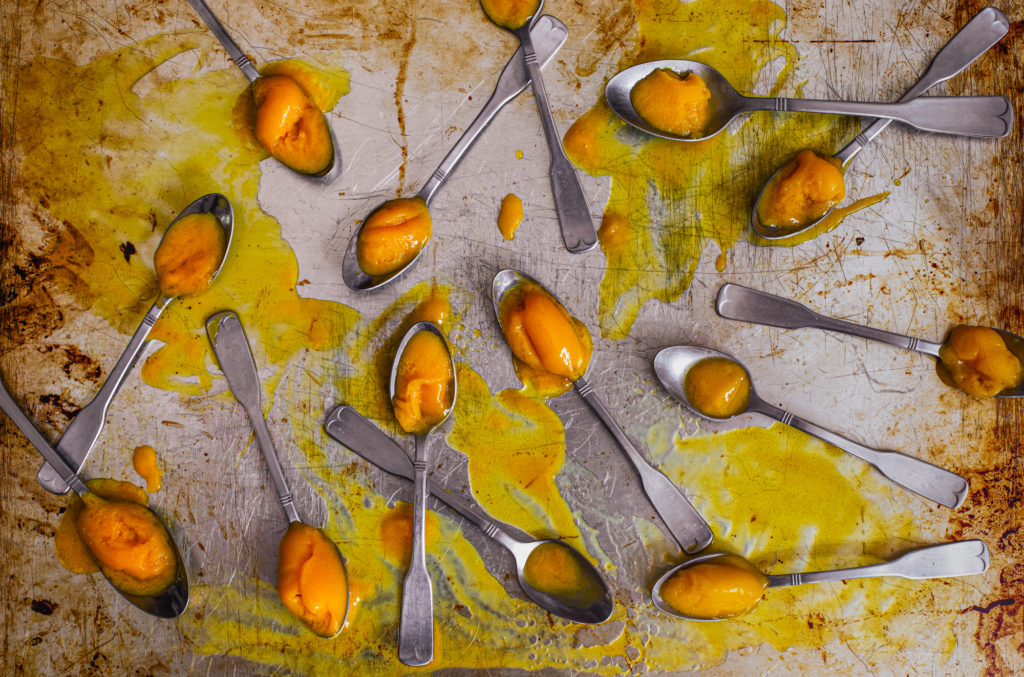
Storage
Buying ice cream to enjoy in the comfort of your own home usually means not finishing a container all in one sitting (I wouldn’t judge if you did, as I pretty frequently call a pint “dinner” or sometimes “breakfast”); according to the FDA, there are multiple servings in a pint. Traditionally, those have been a ½ cup each, but the government agency recently recognized most people would find that amount laughable, and have increased to ⅔ cup to more accurately reflect what consumers really enjoy at a given time.
Still, a pint is typically the smallest amount you can buy for at-home consumption (unless we’re talking novelties like Klondike Bars). So for those abiding by the ⅔ cup standard, it presents the question of what to do with what’s left. I often see folks removing a container from the freezer—be it pint or quart or half-gallon—and allowing it to thaw so an ice cream scooper can effortlessly nose-dive in, then returning it to the freezer later.
The problem with this is that ice cream experiences something called “thermal shock.” When it is extracted from the factory’s commercial batch freezer for the very first time, ice cream is at its absolute best. At that moment, the ice crystals created in the process (which provide structure in which to trap air) are the smallest they’ll ever be, unnoticeable to the human tongue. But the second the product reaches the outside world, they begin to grow, and only continue to do so the longer they’re out of the freezer. Those ice crystals—the keys to creaminess—never again shrink, and once they reach a certain threshold, they become detectable on the palate; that’s when we start complaining about graininess or compromised texture.
This will happen naturally, so all we can do is try to mitigate by keeping the ice cream as frozen as possible throughout the supply chain. You can’t do much about the distributor or the grocer or the store clerk who takes their sweet time moving the product from one freezer to another—but you can be more cognizant of it at home.
If you’re making your own ice cream, package in containers you think you’ll eat in one sitting. With commercially purchased product, it’s harder to combat—sometimes you must allow a carton to sit on the counter before you make any headway. But once you’re able to retrieve your scoop(s), put it back immediately. Nothing breaks my heart more than to watch pints decompensate into creamy soup at some party or holiday affair, those magical little crystals worked so hard to achieve completely squandered. At that point, I recommend just turning it into a milkshake (or grab my book for a whole list of recipes to use up melted ice cream including ice cream pancakes and even ice cream-braised pork shoulder).
If you have the restraint not to eat it all at once, you can stretch the life of your ice cream by pressing a sheet of wax paper onto the surface of the remaining product before you replace the lid. This will help prevent freezer burn that preys on so many delicious scoops.
One last thing—do not under any circumstances run your dipper under warm water to try to speed up the scooping process. By dragging the warm, wet metal across the surface of the ice cream, not only do you melt the ice cream around that scoop, leaving the surface compromised, but you also deposit excess water into your ice cream container, which will just turn to ice when returned to the freezer.





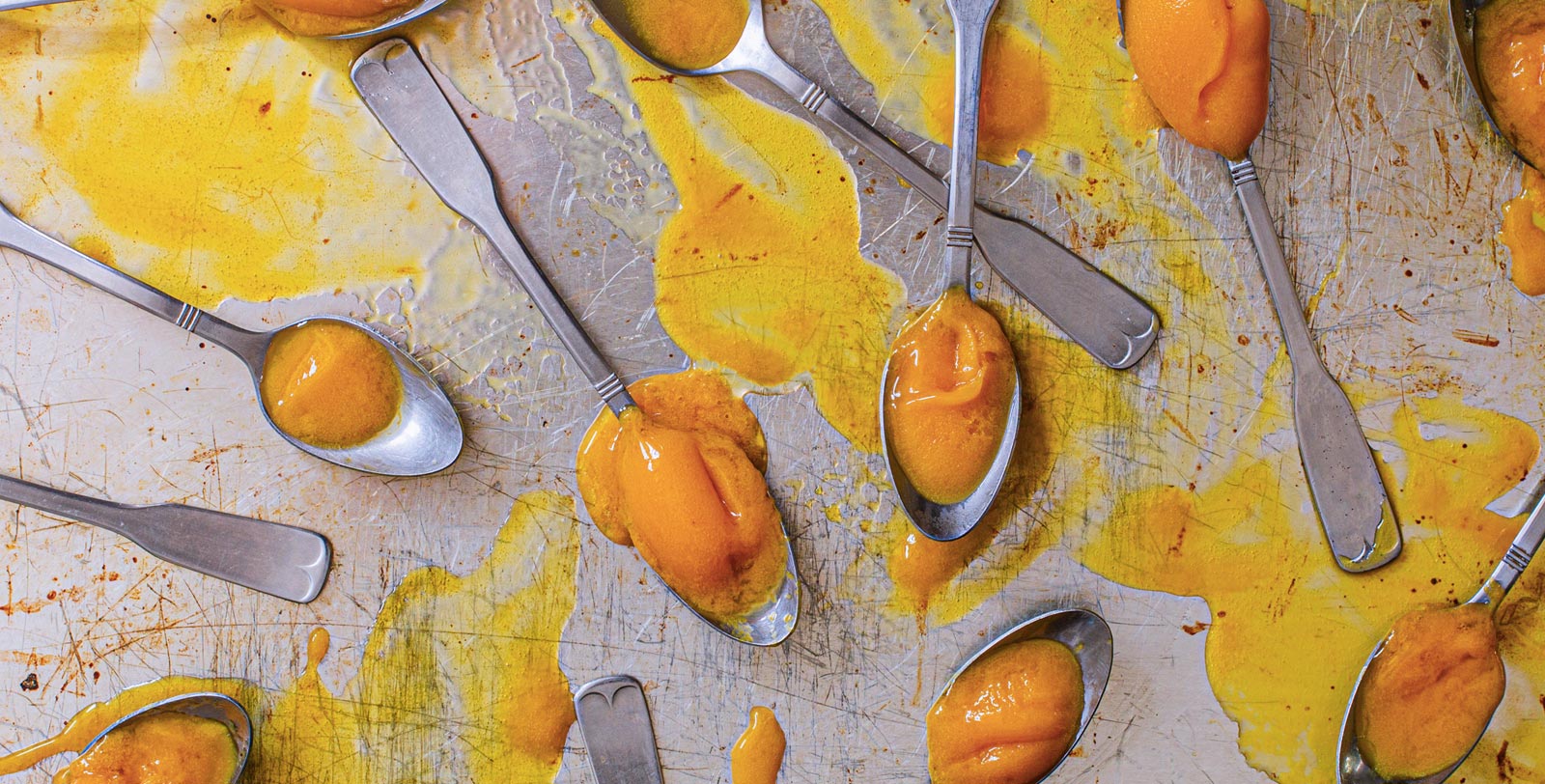

Our comments section is for members only.
Join today to gain exclusive access.